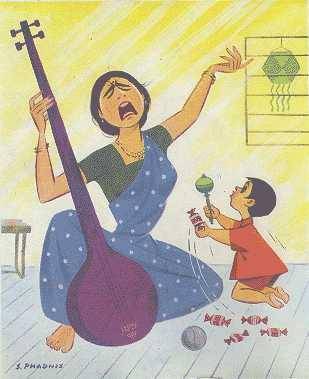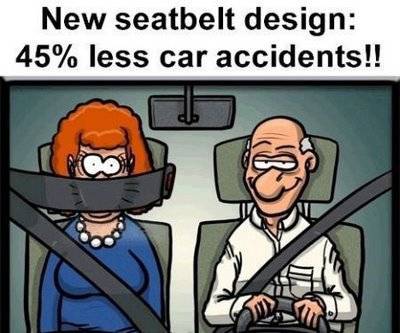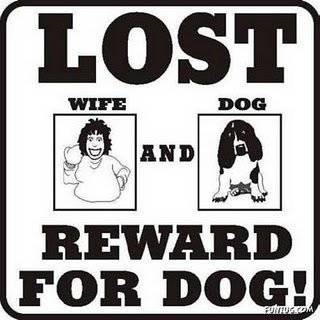The word cartoon has various meanings, based on several very different forms of visual art and illustration. The term has evolved over time.
The original meaning was in fine art, and there cartoon meant a preparatory drawing for a piece of art such as a painting or tapestry.
The somewhat more modern meaning was that of humorous illustrations in magazines and newspapers. Even more recently there are now several contemporary meanings, including creative visual work for print media, for electronic media, and even animated films and animated digital media.
When the word cartoon is applied to print media, it most often refers to a humorous single-panel drawing or gag cartoon, most of which have captions and do not use speech balloons. The word cartoon is not often used to refer to a comic strip.
The artists who draw cartoons are known as cartoonists.
A cartoon (from the Italian "cartone" and Dutch word "karton", meaning strong, heavy paper or pasteboard) is a full-size drawing made on sturdy paper as a study or modello for a painting, stained glass, or tapestry. Cartoons were typically used in the production of frescoes, to accurately link the component parts of the composition when painted on damp plaster over a series of days (giornate). Such cartoons often have pinpricks along the outlines of the design; a bag of soot was then patted or "pounced" over the cartoon, held against the wall to leave black dots on the plaster ("pouncing"). Cartoons by painters, such as the Raphael Cartoons in London and examples by Leonardo da Vinci, are highly prized in their own right. Tapestry cartoons, usually coloured, were followed by eye by the weavers on the loom.
In modern print media, a cartoon is a piece of art, usually humorous in intent. This usage dates from 1843 when Punch magazine applied the term to satirical drawings in its pages, particularly sketches by John Leech. The first of these parodied the preparatory cartoons for grand historical frescoes in the then-new Palace of Westminster. The original title for these drawings was Mr Punch's face is the letter Q and the new title "cartoon" was intended to be ironic, a reference to the self-aggrandising posturing of Westminster politicians.
 |
 |
 |
|
Modern single-panel cartoons or gag cartoons, found in magazines and newspapers, generally consist of a single drawing with a caption immediately beneath or (much less often) a speech balloon. Many consider New Yorker cartoonist Peter Arno the father of the modern gag cartoon (as did Arno himself). Gag cartoonists of note include Charles Addams, Gary Larson, Charles Barsotti, Chon Day and Mel Calman.
Editorial cartoons are a type of gag cartoon found almost exclusively in news publications and news websites. Although they also employ humor, they are more serious in tone, commonly using irony or satire. The art usually acts as a visual metaphor to illustrate a point of view on current social and/or political topics. Editorial cartoons often include speech balloons and, sometimes, multiple panels. Editorial cartoonists of note include Herblock, Mike Peters, David Low, Jeff MacNelly and Gerald Scarfe.
Comic strips, also known as "cartoon strips" in the United Kingdom, are found daily in newspapers worldwide, and are usually a short series of cartoon illustrations in sequence. In the United States they are not as commonly called "cartoons" themselves, but rather "comics" or "funnies". Nonetheless, the creators of comic strips-as well as comic books and graphic novels-are referred to as "cartoonists". Although humor is the most prevalent subject matter, adventure and drama are also represented in this medium. Noteworthy cartoonists in this sense include Charles Schulz, Bill Watterson, Scott Adams, Mort Walker, Steve Bell.
Because of the stylistic similarities between comic strips and early animated movies, "cartoon" came to refer to animation, and this is the sense in which "cartoon" is most commonly used today. These are usually shown on television or in cinemas and are created by showing illustrated images in rapid succession to give the impression of movement. (In this meaning, the word cartoon is sometimes shortened to toon, which was popularized by the movie Who Framed Roger Rabbit). Although the term can be applied to any animated presentation, it is most often used in reference to programs for children, featuring anthropomorphized animals, superheroes, the adventures of child protagonists, and other related genres.
In Renaissance art, the term cartoon refers to a full-size preparatory design for an artwork in another medium. They were used in the creation of frescoes, other large-scale wall paintings, and, in this case, for tapestries. The word cartoon derives from the Italian cartone, which simply means a large piece of paper.
Before beginning a cartoon, Raphael and his assistants would have created small-scale sketches known as modelli. Here, they worked out the basic design and experimented with composition before starting on the cartoon itself.
Constructing cartoons of this size presented a considerable technical challenge. Each cartoon is not one vast sheet of paper, but many small square sheets stuck together with a flour-and-water paste. This X-ray photograph shows the places where the sheets were glued together. The resulting patchwork would have been hung up for painting.
Raphael and his assistants painted the designs with distemper, a mixture of pigment, water, and animal glue. The distemper is laid on very thickly in places, and drips are visible upon close examination.
When the cartoons were finished to Raphael's satisfaction and the distemper had dried, they were sent to the tapestry weavers' workshop, where they were cut into one-yard-wide strips and distributed to the weavers. Each weaver placed a strip beneath his loom and used it as a guide for weaving that particular section of the tapestries. The separately woven sections were then sewn together.
The cartoons were reassembled in the late 1690s, during the reign of William III. By this time, they had become extremely fragile, and they had to be glued to a canvas backing. The joins, which are not always even, are still visible in X-rays. Raphael's cartoons are unusual in their degree of detail and finish. Typically, tapestry cartoons were not quite as highly detailed, and the weavers were allowed to fill in missing details as they saw fit. Raphael also used an extremely subtle colour palette, one which the weavers would not have been able to reproduce exactly. This suggests that Raphael may have considered the cartoons to be works of art in their own right, rather than designs for another work. However, he may simply not have wanted the cartoons to leave his workshop in an unfinished state. In any case, centuries after their creation, the cartoons have come to be considered independent works.



